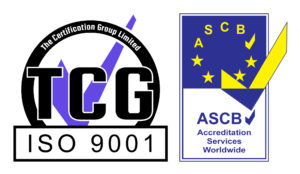Damp Proof Membrane
Damp Proof Membrane – protection from damp in domestic and commercial construction
Hi, my name is Andy Parkin. I am the Managing Director of the Multi-Award Winning Speed Screed. Today I am here to tell you about damp proof membranes.
Damp-proof membrane (often called DPM) is used in construction to prevent moisture from entering the building, usually through capillary action. You will often see these membranes installed as part of damp coursing on external walls, but they are also vital in ensuring that moisture cannot enter a building via the floor.
Damp causes several issues when it is found in buildings, these can include visible damp patches, areas of mould (which can cause breathing issues and allergies), damage to décor, and, importantly, it can undermine the structure of the building.
With this in mind, making sure you look at the types and uses of different damp proof membranes takes on new importance.
Why bother With A Damp Proof Membrane?
Most of the issues with persistent damp within buildings result from the build-up of condensation on surfaces and within the fabric of the building, damp entering from the outside, and rising damp. It is essential when a floor that is next to the ground is constructed, that a proper damp proof membrane is placed to prevent these issues.
Moisture
The aim of the membrane is to prevent any kind of moisture from reaching the top surface of the floor by preventing water from coming in from the ground. To do this the DPM must be made of materials so that they don’t encourage mould or condensation and have a high structural and thermal integrity.
The current recommendations for an effective damp proof membrane are that the ground should be constructed using screed with the damp proof membrane laid either on top or below that layer. Groundwater should be tested for any type of sulphate that can contaminate the base flooring and if so, the membrane should be placed under the slab.
The guidelines state that a damp proof membrane that is placed under the flooring should be around 1200 gauge and constructed of polyethene. This should be laid on a bedding material such as screed which doesn’t damage the sheet and has fully sealed joints.
If the damp proof membrane is to be laid above the base level it can either be polyethene sheeting or at least 3 coats of cold-applied bitumen solution. After this screed should be laid to protect the membrane. The only exception to this is where a specific membrane is used which is designed to act as a final floor surface. Any insulation that is used beneath the membrane should have low absorbency to avoid taking on water and should also be resistant to any identified contaminants that might be present in the ground.
If the planned finish is a timber floor then it is possible to use specific damp proof membranes that can act as damp proofing. Any timber laid directly in the floor base must be treated with a preservative. This won’t be needed if the timber is placed above the level of the membrane.
This is only a brief look at the damp proof membrane and its vital role in maintaining the integrity of domestic, commercial and industrial structures. If you need any more information we are always available and happy to give advice on the best way forward for your project.
Our Accreditations
About Speed Screed
Speed Screed Limited was founded on the key principle of providing first-class customer service. It has since built itself an impressive reputation for delivering high-quality projects across the United Kingdom Floor Screed.
The company’s success is built on its belief in quality work, attention to detail, on-time completion, strong working partnerships and the recruitment of top-level staff. about us >








